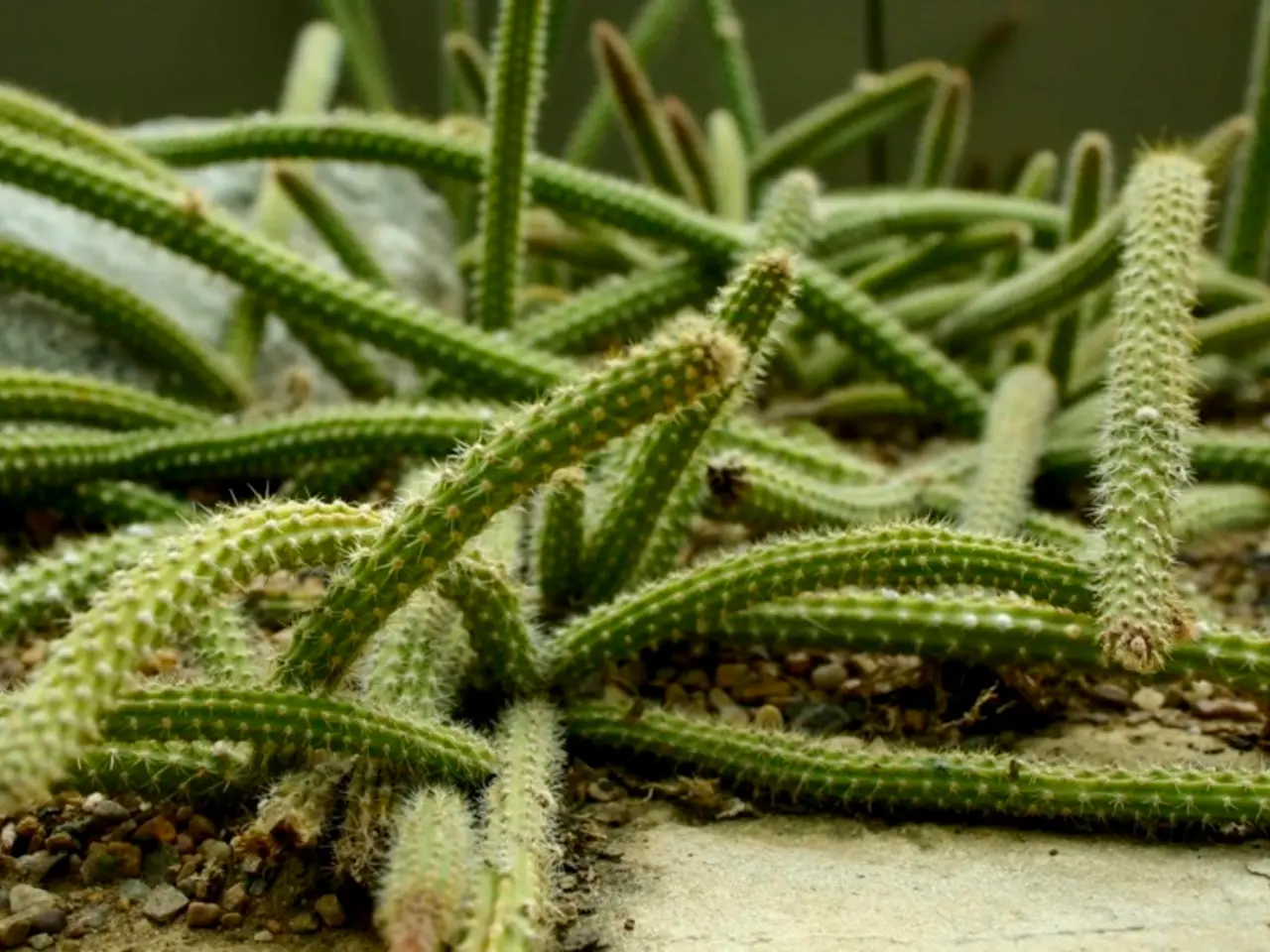Cactus with Bunny Ears: Comprehensive Care and Growing Instructions
The Bunny Ear Cactus, scientifically known as Opuntia microdasys, is a fascinating and unique plant that thrives in arid zones, originating from Mexico and up into Arizona. With its distinctive shape and vibrant flowers, this desert plant can make a captivating addition to any indoor or outdoor space. Here's a simple guide to help you care for your Bunny Ear Cactus successfully.
Light ------------
Provide your cactus with at least 6 hours of direct sunlight daily. A bright, sunny spot either outdoors or near a sunny window indoors is ideal. This generous exposure to light will ensure your cactus stays healthy and continues to grow well.
Water ------------
Water your Bunny Ear Cactus sparingly and only when the soil is completely dry. During the growing season (spring and summer), give the cactus a thorough watering once the soil dries out. Reduce watering significantly or stop altogether in autumn and winter to simulate dormancy and avoid root rot.
Temperature ------------
Maintain temperatures around 65-85°F (18-29°C) for your cactus. Protect it from cold drafts and extreme heat to prevent stress.
Humidity ------------
Keep your cactus in a low-humidity environment, as this plant is adapted to dry desert conditions. No misting or extra humidity is needed.
Soil ------------
Use a well-draining cactus or succulent soil mix to prevent water accumulation and root rot. A pot with drainage holes is essential to allow excess water to escape.
Fertilizer ------------
Fertilize your cactus with a cactus-specific fertilizer every 4-6 weeks during spring and summer. Alternatively, use a balanced fertilizer (e.g., 5-10-5 NPK) diluted to half or quarter strength once in the growing season. Stop fertilizing in autumn and winter when the plant goes dormant.
Preventing Problems, Pests, and Diseases -----------------------------------------
Avoid overwatering to prevent root rot. Check regularly for pests like mealybugs. Remove any dead or damaged parts with clean, sharp tools. Handle the plant carefully using gloves or a folded towel to avoid being pricked by its glochids (tiny spines).
Other Considerations ---------------------
Soil requirement: Well-draining, gritty soil; can be purchased cactus potting soil or homemade version with 3 parts soil and 2 parts sand or other grit.
Temperature tolerance: Average interior temperatures; can be moved outdoors in the summer; killed by temperatures of 25°F (-3.9°C).
Native region: Mexico and up into Arizona.
Watering frequency: Frequent enough to prevent withering of the skin.
Homemade additives: Coffee grounds, wood ash, or fish tank water can be useful for fertilizing cacti.
Dormancy: The plant needs to undergo dormancy in winter, a response to cooler temperatures and lower light levels, in order to flower.
Pruning: Dead or damaged plant material can be removed at any time, be careful when retrieving old pads as the spines are still dangerous.
Flowering: Bunny ear cactus produces white, yellow, or bright pink flowers in spring, which turn into richly red, oblong fruits.
Height: 5 feet (1.5 m).
Varieties: Opuntia microdasys var. albasplina with white glochids, Opuntia microdasys rufida with rusty red glochids, and Opuntia microdasys var. pallida forma cristata with pretty golden yellow glochids.
Botanical name: Opuntia microdasys.
Common issues: The most common issue in cacti growing is moisture; too much can cause stem and root rots, too little can cause the plant to pucker and lose stems and pads.
Spread: 5 feet (1.5 m).
Cacti require food, and can be fertilized with cactus-specific food or a diluted houseplant food.
Outdoors: Plants that are moved outdoors may get scale, mealybug, and other insect pests.
Fertilizing: Fertilizing cactus plants once per month during the growing season is advised, but some gardeners may not fertilize at all.
Light requirement: At least 6-8 hours of bright light.
By following these care steps, your Bunny Ear Cactus will thrive both indoors and outdoors, keeping it healthy and attractive. Happy growing!
Incorporating the Bunny Ear Cactus into your home-and-garden lifestyle can create an appealing home environment, especially in a sunny spot. With its unique gardening potential to prosper in both indoor and outdoor spaces, this cactus can enhance your home-and-garden lifestyle through its captivating appeal.




